You know you’re back in Sweden, along the Swedish west coast when you have that quintessential räksallad.
Text & Photo © CM Cordeiro & , JE Nilsson 2024
Lithuanian food culture, shaped by its history and geography, places a strong emphasis on local and seasonal ingredients. Root vegetables, grains, and meats are at the heart of the cuisine. While dishes like cepelinai (potato dumplings) and šaltibarščiai (cold beet soup) reflect the influence of neighbouring Poland, Russia, and Germany, they retain a distinctly Lithuanian character, often incorporating traditional techniques like fermentation, pickling, and smoking.
For Nordic travellers, Lithuania offers a blend of familiarity and novelty. The widespread use of rye bread, dairy, and hearty ingredients may feel comforting and familiar, yet the Lithuanian approach to preparing and pairing these ingredients—such as using Varškės Sūris (a type of farmer’s cheese) in both sweet and savoury dishes—adds a unique twist. It’s an experience that invites you to discover something new amidst the familiar, with Lithuanian hospitality and a love for simple yet flavourful food making the trip memorable.
If there’s a way to truly grasp the culture and history of a people, it’s through understanding how they live and how they prepare their meals. Our journey took us to both Klaipėda and Kaunas, and the drive between these two cities offered a glimpse into the heart of Lithuania. As we passed through vast farmlands, with crops stretching as far as the eye could see, it became clear that the land itself plays a vital role in shaping the Lithuanian way of life. The fields weren’t just picturesque scenery; they were the very source of the ingredients that define the country’s rich culinary traditions, offering us a deeper connection to the people and their heritage.
Our visit to the markets in Klaipėda brought this connection to life. The city hosts a vibrant marketplace where farmers from the surrounding areas gather to share the fruits of their labour—home-grown produce, pickled cucumbers, and homemade jams that tell the story of the land and the people who work it. The market spills into an open square, bustling with stalls brimming with fresh meat, bread, and seasonal fruits. Adjacent to the square, a building houses even more vendors offering everything from artisanal cheeses to freshly baked goods. It’s here that we felt the real heart of Lithuanian food culture beating—local, fresh, and deeply intertwined with the land.
As we wandered through the market, we met sellers eager to share the stories behind their products—how they were made, where the ingredients came from, and the family recipes that had been passed down through generations. Many of these vendors grew their own produce, and their jars of pickled cucumbers and homemade jams stood as a testament to the fact that in Lithuania, food is still very much a labour of love. The market’s combination of outdoor stalls and indoor vendors offered a comprehensive spectrum of Lithuanian cuisine, showcasing everything from the simplest ingredients like root vegetables and grains to more complex, prepared foods—such as smoked sausages, rich pastries, and cheeses aged to perfection.
We couldn’t resist doing some real shopping, bringing home items we thought were uniquely Lithuanian—a little taste of the culture that we could savour long after our journey ended.
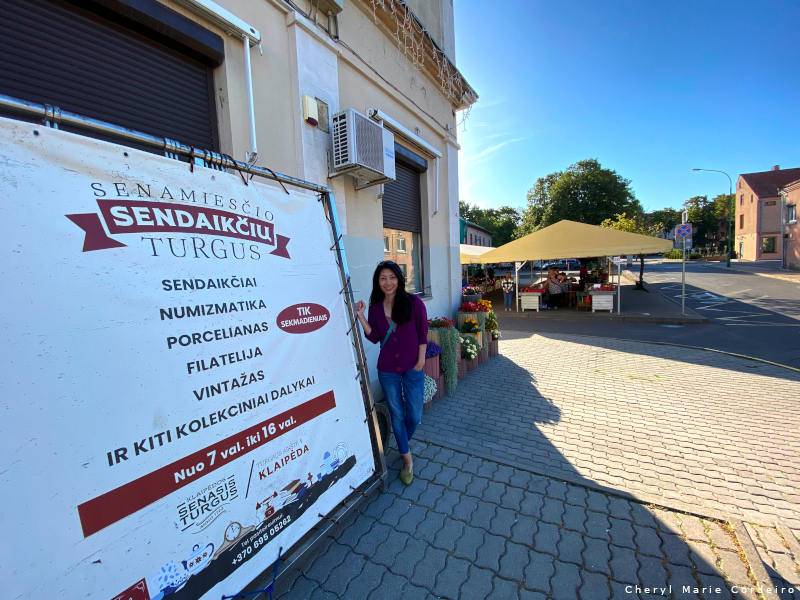
Senasis Turgus (Old Market) is one of the oldest and most significant markets in Klaipėda, Lithuania. Located in the city’s historic center, it serves as a hub for local farmers and vendors to sell a wide range of goods, including fresh produce, meats, dairy products, and handmade items like jams and pickles. The market operates both in an open square and within a building, reflecting the traditional Lithuanian marketplace experience where local, fresh, and homemade products are highly valued. It’s a place where the community comes together, blending history, culture, and commerce.
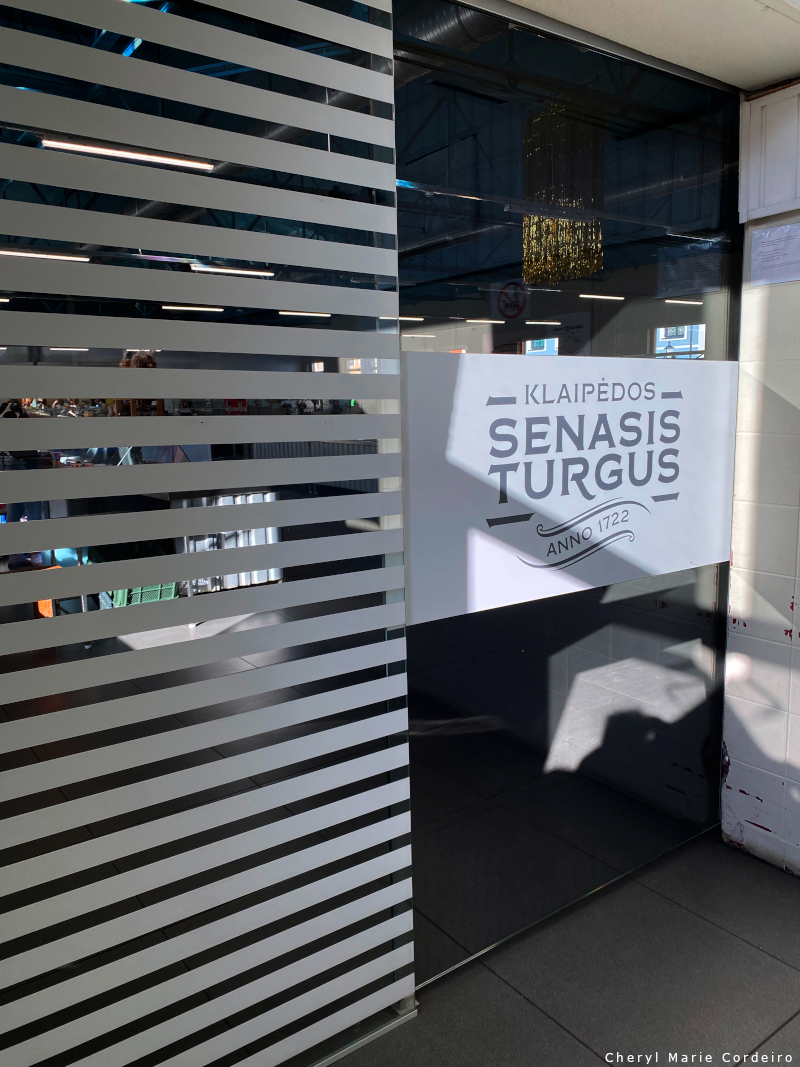
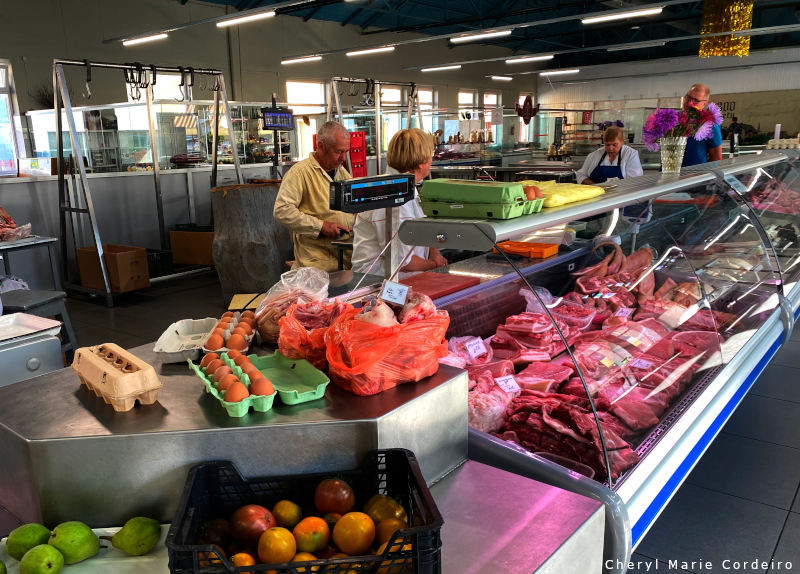


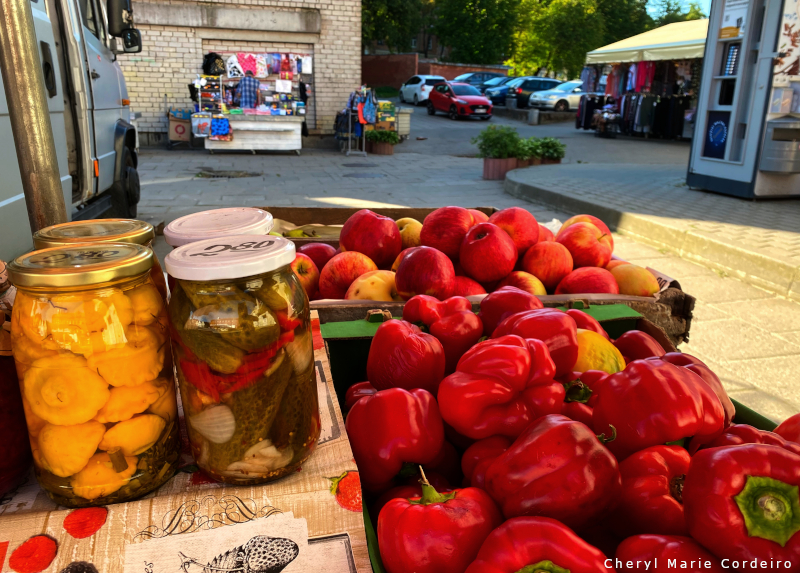
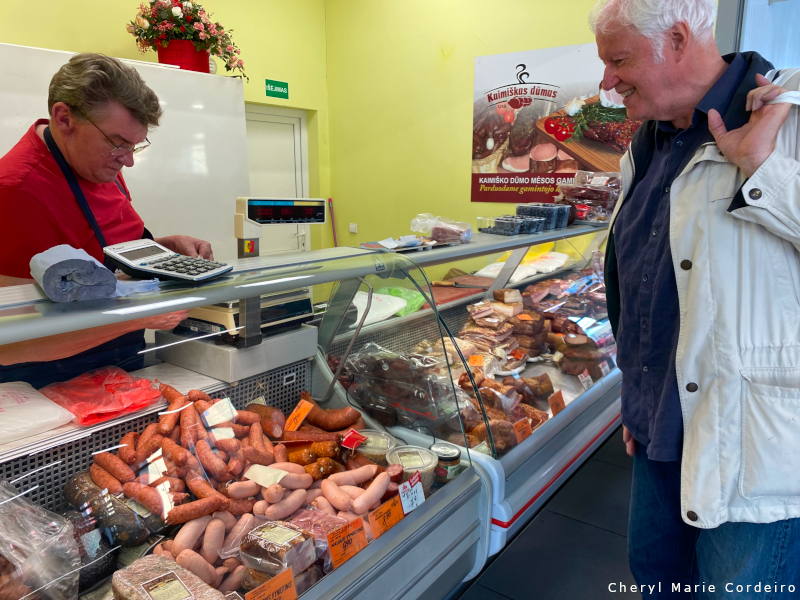


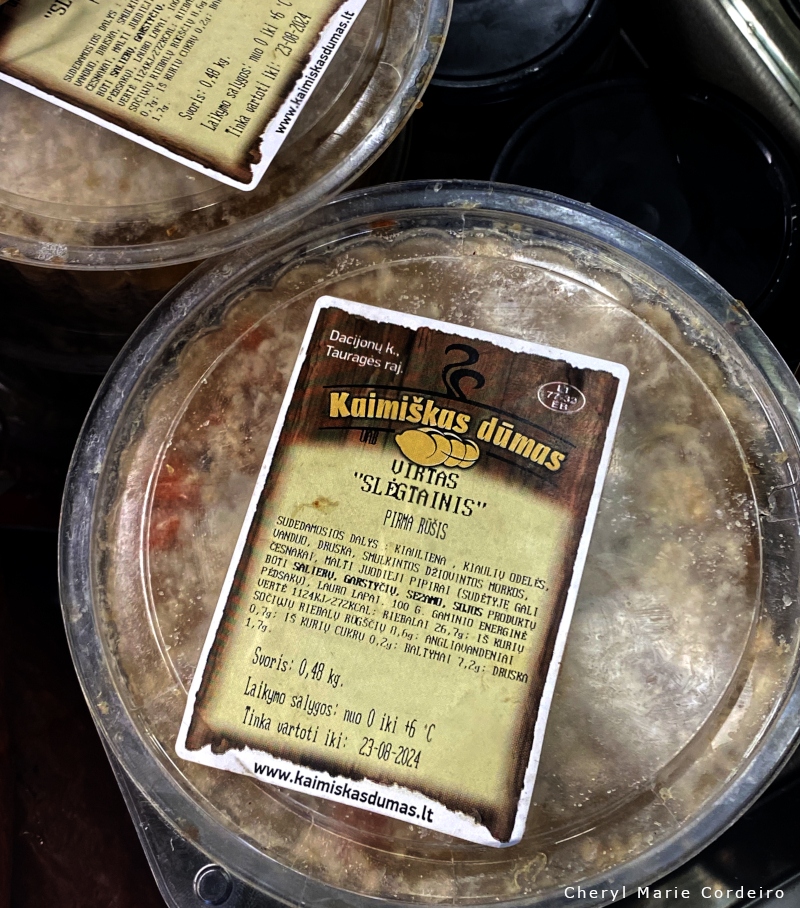
Kiaulių galvų slėgtainis, pirma rūšis. This translates to “Pig Head Pressed Meat”, first grade in English. “Kiaulių galvų slėgtainis” is a traditional Lithuanian product made from pig’s head meat that is typically cooked, seasoned, and then pressed into a loaf or sausage shape. It is often served cold and sliced, similar to how head cheese or brawn might be served in other culinary traditions. We brought two of these home, and they survived the drive from Klaipėda, Lithuania, back to Gothenburg, Sweden.

Varškės Sūris is a traditional Lithuanian curd cheese known for its simplicity and versatility. The cheese is made from 99.6% curd (varškė) and a small amount of salt, with a fat content of at least 9%. It’s typically vacuum-packed to maintain freshness and is stored at temperatures between 0°C to 6°C. Nutritionally, it offers a balance of protein and fat, making it a satisfying component of many Lithuanian dishes. This cheese can be enjoyed in both sweet and savory preparations, often used in breakfast dishes or as a snack. The brand Ilzenbergo Dvaro Ūkis is rooted in the Ilzenberg Manor, a historic estate in Lithuania that dates back to 1515. This brand is known for its commitment to natural and sustainable farming practices, producing high-quality, hand-made dairy products, including their popular Varškės Sūris (curd cheese). The product in the image is a variety with cranberries (su spanguolėmis), featuring a 9% fat content. The brand emphasizes harmony with nature, reflected in their traditional methods and dedication to producing authentic Lithuanian food.
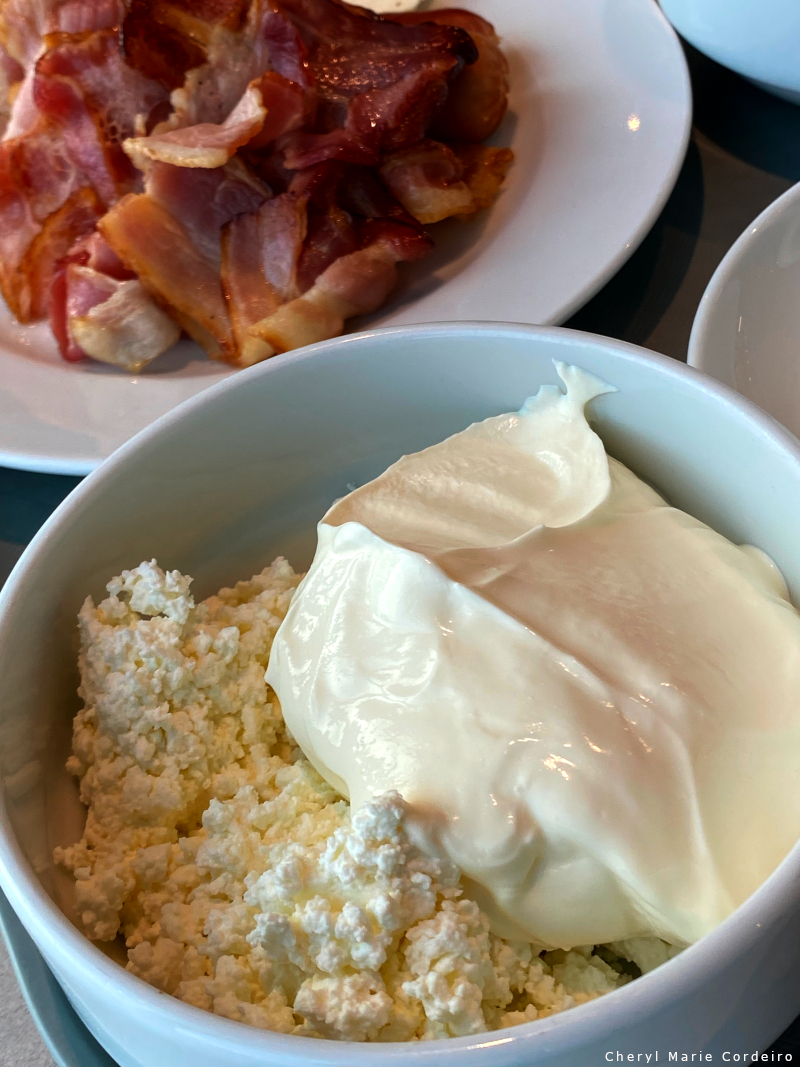
I love breakfasts. In traditional Lithuanian cuisine, it is common to combine Varškės Sūris (curd cheese) with sour cream or crème fraîche. This simple yet rich combination was my absolute favourite at the breakfast table. The curd provides a mild, slightly tangy flavour, while the crème fraîche adds creaminess and depth. This pairing reflects the Lithuanian preference for dairy-based meals that are both nourishing and comforting. Typically served with rye bread, this dish showcases the simplicity and richness of Lithuanian food traditions.

Amidst visiting wet markets and enjoying farm-fresh produce in many of our meals in Lithuania, we also had the opportunity to try some fast food. Here, a schnitzel burger with fries.
